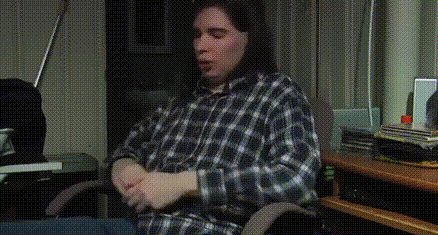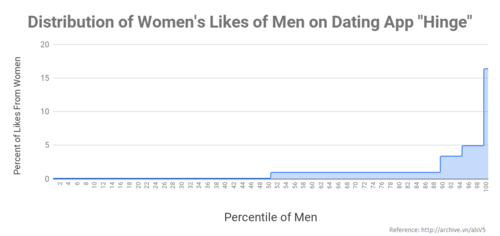Hinge
Hinge is an online dating app owned by Match Group.[1] The app is fairly niche with a low market share compared to other popular online dating apps aimed at heterosexuals.[2] The core purported differentiating feature of the app from other online dating apps such as Tinder (owned by the same parent company) is that Hinge supposedly focuses on fostering long-term relationships among the users of the service.
This ostensible greater focus on stable matchmaking is prominently reflected in the app's marketing, such as in the claim the app is 'designed to be deleted'[3] and is also reflected in the general construction of the app. One of the ways the app sets out to achieve this goal is to limit the number of daily likes a non-premium user can make to encourage greater user selectivity in swiping. The restrictive effect of the limited number of likes provided is designed to be complementary to the app's matching algorithm, which is based a little more on matching users via compatibility rather than raw desirability (as found with Tinder's ELO system).[4] The formating for profiles on the site is also crafted to rely a tad more on non-visual profile elements such as text prompts than other swipe-based apps.
Despite the design features of the app and the stated focus on long-term dating, the primary driver of attention on the app is most likely still physical attractiveness, as has been found with other apps that attempted to promote less shallow behaviour among their users.[5] Furthermore, as with other online dating apps, the most attractive users receive the lion's share of attention, a phenomenon particularly pronounced among male users of the app.[6]
Rampant female hypergamy[edit | edit source]
According to an internal study conducted by the creators of Hinge, female users' behaviour on the app follows a highly inequitable power law distribution. In detail, 95.7% of female user's likes go to the top 50% of men, 41.1% of their likes go to the top 5 percent and 16.4 percent of their likes go to the top 1 percent.[7][8] This desirability skew suggests that female users largely agree on which profiles are desirable or not and that these attractive men get the majority of dating opportunities from the app.
As meeting online[9][10] is now the primary way people date, evidence of profound inequality in desirability on dating apps by sex has led to claims that these apps may be the primary factor increasing mating skew among young men. While data supporting this assertion is mixed on the macro level, it does seem the availability of partners on online dating apps and the relative anonymity they afford users may increase the proliferation of promiscuous behaviours such as relational infidelity, particularly among desirable users of said apps.[11] Other research has found connections between frequent dating app use and propensity to engage in casual sex, which the majority of men would not be expected to be able to get from the app given the harsh skew in likes (and presumably, engagement) provided by the female users of the app.[12]
References[edit | edit source]
- ↑ https://techcrunch.com/2019/02/07/match-fully-acquires-relationship-focused-app-hinge/
- ↑ https://stars.library.ucf.edu/honorstheses/926/
- ↑ https://www.thedrum.com/creative-works/project/hinge-designed-be-deleted
- ↑ https://thetab.com/uk/2020/05/20/this-is-how-the-nobel-prize-winning-hinge-algorithm-actually-works-157740
- ↑ https://incels.wiki/w/Scientific_Blackpill#Your_looks_define_perception_of_your_personality_in_online_dating
- ↑ https://incels.wiki/w/Scientific_Blackpill#The_top_10.25_of_men_get_58.25_of_women.27s_likes_in_online_dating
- ↑ https://qz.com/1051462/these-statistics-show-why-its-so-hard-to-be-an-average-man-on-dating-apps/ [Archive.is]
- ↑ https://i.postimg.cc/xT8LMVX9/Distribution-of-Women-s-Likes-of-Men-on-Dating-App-Hinge.png
- ↑ Rosenfeld M, Thomas RJ, Hausen S. 2019. Research Note: Disintermediating your friends.
- ↑ https://data.stanford.edu/hcmst https://qz.com/1546677/around-40-of-us-couples-now-first-meet-online
- ↑ https://www.sciencedirect.com/science/article/pii/S0747563219302961
- ↑ https://www.sciencedirect.com/science/article/abs/pii/S1877575616300672

